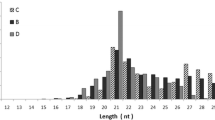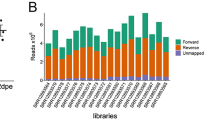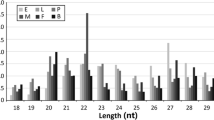Abstract
RNA-binding proteins (RBPs) are the proteins that bind RNAs and regulate their functioning. RBPs in mosquitoes are gaining attention due to their ability to bind flaviviruses and regulate their replication and transmission. Despite their relevance, RBPs in mosquitoes are not explored much. In this study, we screened the whole genome of Aedes aegypti, the primary vector of several pathogenic viruses, and identified the proteins containing RNA recognition motif (RRM), the most abundant protein domain in eukaryotes. Using several in silico strategies, a total of 135 RRM-containing RBPs were identified in Ae. aegypti. The proteins were characterized based on their available annotations and the sequence similarity with Drosophila melanogaster. Ae. aegypti RRM-containing RBPs included serine/arginine-rich (SR) proteins, polyadenylate-binding proteins (PABP), heteronuclear ribonucleoproteins (hnRNP), small nuclear ribonucleoproteins (snRNP), splicing factors, eukaryotic initiation factors, transformers, and nucleolysins. Phylogenetic analysis revealed that the proteins and the domain organization are conserved among Ae. aegypti, Bombyx mori, and Drosophila melanogaster. However, the gene length and the intron-exon organization varied across the insect species. Expression analysis of the genes encoding RBPs using publicly available RNA sequencing data for different developmental time points of the mosquito life cycle starting from the ovary and eggs up to the adults revealed stage-specific expression with several genes preferentially expressed in early embryonic stages and blood-fed female ovaries. This is the first database for the Ae. aegypti RBPs that can serve as the reference base for future investigations. Stage-specific genes can be further explored to determine their role in mosquito growth and development with a focus on developing novel mosquito control strategies.







Similar content being viewed by others
Data availability
All the data has been included in the manuscript.
References
Akbari OS, Antoshechkin I, Amrhein H et al (2013) The developmental transcriptome of the mosquito Aedes aegypti, an invasive species and major arbovirus vector. G3 3:1493–1509. https://doi.org/10.1534/g3.113.006742
Aksaas AK, Larsen ACV, Rogne M et al (2011) G-patch domain and KOW motifs-containing protein, GPKOW; a nuclear RNA-binding protein regulated by protein kinase A. J Mol Signal 6:10. https://doi.org/10.1186/1750-2187-6-10
Alfano C, Sanfelice D, Babon J et al (2004) Structural analysis of cooperative RNA binding by the La motif and central RRM domain of human La protein. Nat Struct Mol Biol 11:323–329. https://doi.org/10.1038/nsmb747
Aravind L, Koonin EV (2000) SAP - a putative DNA-binding motif involved in chromosomal organization. Trends Biochem Sci 25:112–114. https://doi.org/10.1016/S0968-0004(99)01537-6
Bansal P, Madlung J, Schaaf K et al (2020) An interaction network of RNA-binding proteins involved in Drosophila oogenesis. Mol Cell Proteomics 19:1485–1502. https://doi.org/10.1074/mcp.RA119.001912
Belostotsky DA (2003) Unexpected complexity of poly(A)-binding protein gene families in flowering plants: three conserved lineages that are at least 200 million years old and possible auto- and cross-regulation. Genetics 163:311–319. https://doi.org/10.1093/genetics/163.1.311
Benoit B, He CH, Zhang F et al (2009) An essential role for the RNA-binding protein Smaug during the Drosophila maternal-to-zygotic transition. Development 136:923–932. https://doi.org/10.1242/dev.031815
Bernstein P, Peltz SW, Ross J (1989) The poly(A)-poly(A)-binding protein complex is a major determinant of mRNA stability in vitro. Mol Cell Biol 9:659–670. https://doi.org/10.1128/mcb.9.2.659-670.1989
Brinegar AE, Cooper TA (2016) Roles for RNA-binding proteins in development and disease. Brain Res 1647:1–8. https://doi.org/10.1016/j.brainres.2016.02.050
Brooks AN, Duff MO, May G et al (2015) Regulation of alternative splicing in Drosophila by 56 RNA binding proteins. Genome Res 25:1771–1780. https://doi.org/10.1101/gr.192518.115
Cáceres L, Nilson LA (2009) Translational repression of gurken mRNA in the Drosophila oocyte requires the hnRNP Squid in the nurse cells. Dev Biol 326:327–334. https://doi.org/10.1016/j.ydbio.2008.11.030
Conesa A, Götz S, García-Gómez JM et al (2005) Blast2GO: a universal tool for annotation, visualization and analysis in functional genomics research. Bioinformatics 21:3674–3676. https://doi.org/10.1093/bioinformatics/bti610
Díaz-Muñoz MD, Turner M (2018) Uncovering the role of RNA-binding proteins in gene expression in the immune system. Front Immunol 9. https://doi.org/10.3389/fimmu.2018.01094
Diosa-Toro M, Prasanth KR, Bradrick SS, Garcia Blanco MA (2020) Role of RNA-binding proteins during the late stages of Flavivirus replication cycle. Virol J 17:1–14. https://doi.org/10.1186/s12985-020-01329-7
Dong G, Chakshusmathi G, Wolin SL, Reinisch KM (2004) Structure of the La motif: a winged helix domain mediates RNA binding via a conserved aromatic patch. EMBO J 23:1000–1007. https://doi.org/10.1038/sj.emboj.7600115
Fredericks AM, Cygan KJ, Brown BA, Fairbrother WG (2015) RNA-binding proteins: splicing factors and disease. Biomolecules 5:893–909. https://doi.org/10.3390/biom5020893
Gamberi C, Johnstone O, Lasko P (2006) Drosophila RNA binding proteins. Int Rev Cytol 248:43–139. https://doi.org/10.1016/S0074-7696(06)48002-5
Geuens T, Bouhy D, Timmerman V (2016) The hnRNP family: insights into their role in health and disease. Hum Genet 135:851–867. https://doi.org/10.1007/s00439-016-1683-5
Glisovic T, Bachorik JL, Yong J, Dreyfuss G (2008) RNA-binding proteins and post-transcriptional gene regulation. FEBS Lett 582:1977–1986. https://doi.org/10.1016/j.febslet.2008.03.004
Hammani K, Cook WB, Barkan A (2012) RNA binding and RNA remodeling activities of the half-a-tetratricopeptide (HAT) protein HCF107 underlie its effects on gene expression. Proc Natl Acad Sci U S A 109:5651–5656. https://doi.org/10.1073/pnas.1200318109
Holmqvist E, Vogel J (2018) RNA-binding proteins in bacteria. Nat Rev Microbiol 16:601–615. https://doi.org/10.1038/s41579-018-0049-5
Hu B, Jin J, Guo AY et al (2015) GSDS 2.0: an upgraded gene feature visualization server. Bioinformatics 31:1296–1297. https://doi.org/10.1093/bioinformatics/btu817
Hurley JH, Lee S, Prag G (2006) Ubiquitin-binding domains. Biochem J 399:361–372. https://doi.org/10.1042/BJ20061138
Iuchi S (2001) Three classes of C2H2 zinc finger proteins. Cell Mol Life Sci 58:625–635. https://doi.org/10.1007/PL00000885
Jeong S (2017) SR proteins: binders, regulators, and connectors of RNA. Mol Cells 40:1–9. https://doi.org/10.14348/molcells.2017.2319
Kelley RL (1993) Initial organization of the Drosophila dorsoventral axis depends on an RNA-binding protein encoded by the squid gene. Genes Dev 7:948–960. https://doi.org/10.1101/gad.7.6.948
Kerner P, Degnan SM, Marchand L et al (2011) Evolution of RNA-binding proteins in animals: insights from genome-wide analysis in the sponge Amphimedon queenslandica. Mol Biol Evol 28:2289–2303. https://doi.org/10.1093/molbev/msr046
Kim D, Paggi JM, Park C et al (2019) Graph-based genome alignment and genotyping with HISAT2 and HISAT-genotype. Nat Biotechnol 37:907–915. https://doi.org/10.1038/s41587-019-0201-4
Krecic AM, Swanson MS (1999) hnRNP complexes: composition, structure, and function. Curr Opin Cell Biol 11:363–371. https://doi.org/10.1016/S0955-0674(99)80051-9
Kühn U, Wahle E (2004) Structure and function of poly(A) binding proteins. Biochim Biophys Acta Gene Struct Expr 1678:67–84. https://doi.org/10.1016/j.bbaexp.2004.03.008
Kumar S, Stecher G, Tamura K (2016) MEGA7: Molecular Evolutionary Genetics Analysis Version 7.0 for bigger datasets. Mol Biol Evol 33:1870–1874. https://doi.org/10.1093/MOLBEV/MSW054
Kuwasako K, He F, Inoue M et al (2006) Solution structures of the SURP domains and the subunit-assembly mechanism within the splicing factor SF3a complex in 17S U2 snRNP. Structure 14:1677–1689. https://doi.org/10.1016/j.str.2006.09.009
Letunic I, Bork P (2021) Interactive tree of life (iTOL) v5: an online tool for phylogenetic tree display and annotation. Nucleic Acids Res 49:W293–W296. https://doi.org/10.1093/nar/gkab301
Li K, Guo ZW, Zhai XM et al (2020) RBPTD: a database of cancer-related RNA-binding proteins in humans. Database 2020:1–7. https://doi.org/10.1093/database/baz156
Loerch S, Kielkopf CL (2015) Dividing and conquering the family of RNA recognition motifs: a representative case based on hnRNP L. J Mol Biol 427:2997–3000
Lorick KL, Jensen JP, Fang S et al (1999) RING fingers mediate ubiquitin-conjugating enzyme (E2)-dependent ubiquitination. Proc Natl Acad Sci U S A 96:11364–11369. https://doi.org/10.1073/pnas.96.20.11364
Lorković ZJ, Barta A (2002) Genome analysis: RNA recognition motif (RRM) and K homology (KH) domain RNA-binding proteins from the flowering plant Arabidopsis thaliana. Nucleic Acids Res 30:623–635. https://doi.org/10.1093/nar/30.3.623
Mahalingam R, Walling JG (2020) Genomic survey of RNA recognition motif (RRM) containing RNA binding proteins from barley (Hordeum vulgare ssp. vulgare). Genomics 112:1829–1839. https://doi.org/10.1016/j.ygeno.2019.10.016
Mandel CR, Bai Y, Tong L (2008) Protein factors in pre-mRNA 3′-end processing. Cell Mol Life Sci 65:1099–1122. https://doi.org/10.1007/s00018-007-7474-3
Marinotti O, Ngo T, Kojin BB et al (2014) Integrated proteomic and transcriptomic analysis of the Aedes aegypti eggshell. BMC Dev Biol 14:1–11. https://doi.org/10.1186/1471-213X-14-15
Maris C, Dominguez C, Allain FHT (2005) The RNA recognition motif, a plastic RNA-binding platform to regulate post-transcriptional gene expression. FEBS J 272:2118–2131. https://doi.org/10.1111/j.1742-4658.2005.04653.x
Matera AG, Wang Z (2014) Erratum: a day in the life of the spliceosome (Nature Reviews Molecular Cell Biology (2014) 15 (108-122)). Nat Rev Mol Cell Biol 15:294. https://doi.org/10.1038/nrm3778
Matthews BJ, Dudchenko O, Kingan SB et al (2018) Improved reference genome of Aedes aegypti informs arbovirus vector control. Nature 563:501–507. https://doi.org/10.1038/s41586-018-0692-z
Matunis EL, Kelley R, Dreyfuss G (1994) Essential role for a heterogeneous nuclear ribonucleoprotein (hnRNP) in oogenesis: hrp40 is absent from the germ line in the dorsoventral mutant squid. Proc Natl Acad Sci U S A 91:2781–2784. https://doi.org/10.1073/pnas.91.7.2781
Michel SLJ, Guerrerio AL, Berg JM (2003) Selective RNA binding by a single CCCH zinc-binding domain from Nup475 (Tristetraprolin). Biochemistry 42:4626–4630. https://doi.org/10.1021/bi034073h
Muleya V, Marondedze C (2020) Functional roles of RNA-binding proteins in plant signaling. Life 10:1–8. https://doi.org/10.3390/life10110288
Nene V, Wortman JR, Lawson D et al (2007) Genome sequence of Aedes aegypti, a major arbovirus vector. Science 316:1718–1723. https://doi.org/10.1126/science.1138878
Norvell A, Kelley RL, Wehr K, Schũpbach T (1999) Specific isoforms of Squid, a Drosophila hnRNP, perform distinct roles in Gurken localization during oogenesis. Genes Dev 13:864–876. https://doi.org/10.1101/gad.13.7.864
Paschal BM, Gerace L (1995) Identification of NTF2, a cytosolic factor for nuclear import that interacts with nuclear pore complex protein p62. J Cell Biol 129:925–937. https://doi.org/10.1083/jcb.129.4.925
Pellizzoni L, Lotti F, Maras B, Pierandrei-Amaldi P (1997) Cellular nucleic acid binding protein binds a conserved region of the 5’ UTR of Xenopus laevis ribosomal protein mRNAs. J Mol Biol 267:264–275. https://doi.org/10.1006/jmbi.1996.0888
SenGupta D (2013) RNA-binding domains in proteins. In: Brenner’s encyclopedia of genetics: Second Edition. Elsevier Inc., pp 274–276
Smith RWP, Blee TKP, Gray NK (2014) Poly(A)-binding proteins are required for diverse biological processes in metazoans. Biochem Soc Trans 42:1229–1237. https://doi.org/10.1042/BST20140111
Solymosy F, Pollák T (1993) Uridylate-rich small nuclear RNAs (UsnRNAs), their genes and pseudogenes, and UsnRNPs in plants: structure and function. A comparative approach. CRC Crit Rev Plant Sci 12:275–369. https://doi.org/10.1080/07352689309701904
Steinhauer J, Kalderon D (2005) The RNA-binding protein Squid is required for the establishment of anteroposter polarity in the Drosophila oocyte. Development 132:5515–5525. https://doi.org/10.1242/dev.02159
Summers MF (1991) Zinc finger motif for single-stranded nucleic acids? Investigations by nuclear magnetic resonance. J Cell Biochem 45:41–48. https://doi.org/10.1002/jcb.240450110
Sysoev VO, Fischer B, Frese CK et al (2016) Global changes of the RNA-bound proteome during the maternal-to-zygotic transition in Drosophila. Nat Commun 7. https://doi.org/10.1038/ncomms12128
Szklarczyk D, Gable AL, Nastou KC et al (2021) The STRING database in 2021: customizable protein-protein networks, and functional characterization of user-uploaded gene/measurement sets. Nucleic Acids Res 49:D605–D612. https://doi.org/10.1093/nar/gkaa1074
Szymczyna BR, Bowman J, McCracken S et al (2003) Structure and function of the PWI motif: a novel nucleic acid-binding domain that facilitates pre-mRNA processing. Genes Dev 17:461–475. https://doi.org/10.1101/gad.1060403
Taschuk F, Tapescu I, Moy RH, Cherry S (2020) Ddx56 binds to Chikungunya virus rna to control infection. MBio 11:1–16. https://doi.org/10.1128/mBio.02623-20
Trapnell C, Roberts A, Goff L et al (2012) Differential gene and transcript expression analysis of RNA-seq experiments with TopHat and Cufflinks. Nat Protoc 7:562–578. https://doi.org/10.1038/nprot.2012.016
Valverde R, Edwards L, Regan L (2008) Structure and function of KH domains. FEBS J 275:2712–2726. https://doi.org/10.1111/j.1742-4658.2008.06411.x
Venter JC, Adams MD, Myers EW et al (2001) Celera_genoma. Science 291:1–49
Voorrips RE (2002) Mapchart: software for the graphical presentation of linkage maps and QTLs. J Hered 93:77–78. https://doi.org/10.1093/jhered/93.1.77
Vuong CK, Black DL, Zheng S (2016) The neurogenetics of alternative splicing. Nat Rev Neurosci 17:265–281. https://doi.org/10.1038/nrn.2016.27
Wang L-L, Zhou Z-Y (2009) RNA recognition motif (RRM)-containing proteins in Bombyx mori. African J Biotechnol 8:1121–1126
Wang Y, Yu Y, Pang Y et al (2021) The distinct roles of zinc finger CCHC-type (ZCCHC) superfamily proteins in the regulation of RNA metabolism. RNA Biol 18:2107–2126. https://doi.org/10.1080/15476286.2021.1909320
Will CL, Lührmann R (2011) Spliceosome structure and function. Cold Spring Harb Perspect Biol 3. https://doi.org/10.1101/cshperspect.a003707
Wurth L (2012) Versatility of RNA-binding proteins in cancer. Comp Funct Genomics 2012. https://doi.org/10.1155/2012/178525
Yeh S-C, Diosa-Toro M, Tan W-L et al (2022) Characterization of dengue virus 3’UTR RNA binding proteins in mosquitoes reveals that AeStaufen reduces subgenomic flaviviral RNA in saliva. PLoS Pathog 18:1–46
Yoon JS, Mogilicherla K, Gurusamy D et al (2018) Double-stranded RNA binding protein, Staufen, is required for the initiation of RNAi in coleopteran insects. Proc Natl Acad Sci U S A 115:8334–8339. https://doi.org/10.1073/pnas.1809381115
Zhang Y, Rataj K, Simpson GG, Tong L (2016) Crystal structure of the SPOC domain of the Arabidopsis flowering regulator FPA. PLoS One 11:1–13. https://doi.org/10.1371/journal.pone.0160694
Acknowledgements
The authors would like to thank the Indian Council of Medical Research (ICMR), New Delhi for intramural support. Melveettil Kishor Sumitha would like to thank ICMR for the Senior Research Fellowship and Madurai Kamaraj University (MKU) for supporting the research.
Author information
Authors and Affiliations
Contributions
Conceptualization, methodology, formal analysis and investigation, visualization, and writing the manuscript: Bhavna Gupta. Data retrieval and analysis, visualization, and writing the manuscript: Melveettil Kishor Sumitha. Data retrieval and visualization: Mariapillai Kalimuthu and Murali Aarthy. Manuscript review: Ashwani Kumar and Rajaiah Paramasivan.
Corresponding author
Ethics declarations
Ethics approval
Not applicable.
Consent to participate
Not applicable.
Consent for publication
Not applicable.
Conflict of interest
The authors declare no competing interests.
Additional information
Handling Editor: Una Ryan
Publisher’s Note
Springer Nature remains neutral with regard to jurisdictional claims in published maps and institutional affiliations.
Supplementary information
ESM 1
(DOCX 57 kb)
ESM 2
Figure S1. Amino acid sequence alignment of squid protein and its orthologs in Aedes aegypti. Jalview has been used for alignment. Identical residues are marked with dots whereas high conservation in the amino acid sequences of both proteins is shown in bright yellow color and higher numerical value. (TIF 162 kb)
Rights and permissions
Springer Nature or its licensor (e.g. a society or other partner) holds exclusive rights to this article under a publishing agreement with the author(s) or other rightsholder(s); author self-archiving of the accepted manuscript version of this article is solely governed by the terms of such publishing agreement and applicable law.
About this article
Cite this article
Sumitha, M.K., Kalimuthu, M., Aarthy, M. et al. In silico identification, characterization, and expression analysis of RNA recognition motif (RRM) containing RNA-binding proteins in Aedes aegypti. Parasitol Res 122, 2847–2857 (2023). https://doi.org/10.1007/s00436-023-07969-2
Received:
Accepted:
Published:
Issue Date:
DOI: https://doi.org/10.1007/s00436-023-07969-2




